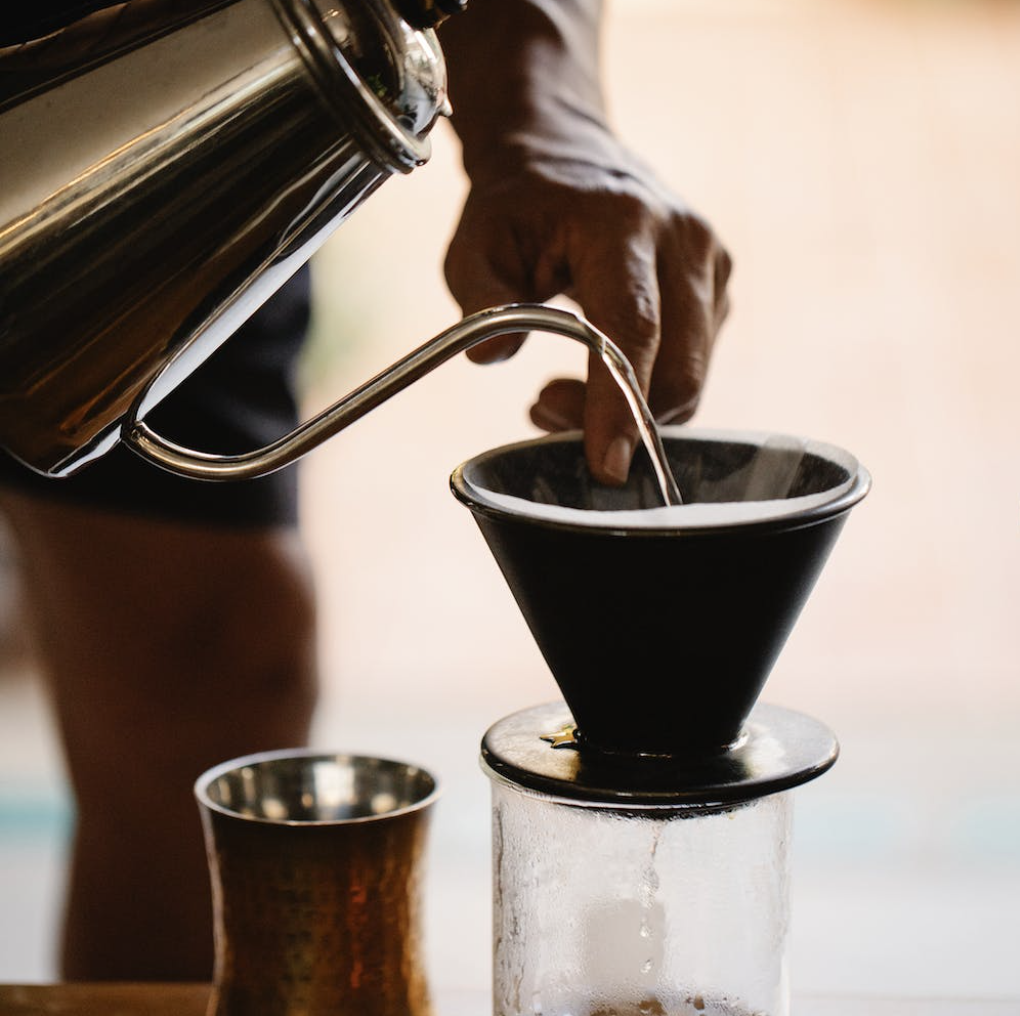
One common technique for making delicious Japanese coffee is called “hand drip,” which involves using a paper filter. When making hand drip coffee, hot water is poured over the coffee grounds in a circular motion, as opposed to the linear motion used by coffee makers and French presses.
Nothing more complicated than a few basic tools. A cup of coffee is easy to prepare at home.
Like a regular coffee maker, brewing using a hand drip produces a smooth and nuanced cup of joe. If you want to prepare coffee by hand, the trick is to pour it in a spiral slowly.
By reading this article, this article teaches the fundamentals of making drip coffee at home and advanced techniques to ensure consistently delicious brews. You can use a few easy tricks and tips to wow your loved ones or guests.
We are big fans of several different coffee brewing methods at Kappu. However, hand-drip coffee is what you’ll learn about here!
What is Hand Drip Coffee?
Brewing coffee by hand gives baristas a lot of leeway to show off minor nuances in the finished product. There are a variety of different ways to brew coffee in different parts of the world. Coffee prepared using a hand dripper is both freshly brewed and waste-free.
The majority of coffee lovers place a premium on consuming coffee that is as close to its original roast as possible. Regular coffee drinkers know to pre-grind their beans and store them in the pantry for several days before using them.
But you can use our Kappu’s Beginner Box to easily make your hand-drip coffee without worrying about the grinding process!
Good-tasting coffee begins with freshly ground beans, so always do that step right before brewing. Doing so allows you to enjoy freshly ground coffee’s full flavor and fragrant scent for longer.
One more perk of the hand-drip method is that it results in less trash. As little as possible is used for a single cup. However, the idea itself is more important than the specifics. The use of a coffee machine that makes your drink automatically removes you from experience.

How to Make Drip Coffee – the Perfectionist Step-Wise Guide
Making the ideal cup of coffee requires careful planning, practice, and precision in terms of both ingredients and preparation time. While the technical aspects of producing coffee, such as the ideal grind size, brew time, and water temperature, are important, the human element cannot be overlooked.
In order to use the hand drip technique, you will need the following:
- A water boiler with a swan neck (Gooseneck kettle)
- Coffee grinder and a filter
- A ceramic coffee dripper
Don’t use plastic cups because they compromise the coffee’s taste.
Step 1: Preparing The Water for hand drip coffee
Since water accounts for more than half of the volume in a typical cup of coffee, it should be no surprise that this liquid is crucial to brewing.
For health and safety reasons, water should be boiled. Bring at least 600 grams (20 oz) of water to a boil. There is a direct correlation between the water temperature and the final flavor of your coffee. Adjust the brewing temperature up if you want more acidity and down if you want more bitterness.
Step 2: Prep Filter And Coffee Grounds by Kappu
To begin, pour some hot water from the kettle through the filter paper without any coffee in it to get the drip going. The water in the hand drip carafe should then be discarded. The step here is for people who prefer filter paper instead of a permanent filter.
Next, drop the ground coffee in the filter (or directly into the hand drip) and tap the device gently to flatten the ground if using a grinder. We suggest 30 grams of coffee for blends. Lightly roasted, single-origin coffee has a more nuanced flavor, so we recommend using less coffee (22 grams for every 350 grams of water) to enjoy it.
Step 3: The Bloom
Bloom refers to the first pour of water into the coffee maker when just enough water is added to encourage the coffee grinds to expand and fill the pot.
Get a timer going. Pour the water over the coffee in a gentle, spiraling motion, starting in the middle and working your way out to the edges and back. When the scale reaches 60 grams, stop pouring. Saturate all of the ground thoroughly. Assume 15 seconds for the pour. Please wait 30 seconds between the pours to allow the coffee to bloom.
Step 4: Pour Continuously
Let’s talk about the second one. Pour in a steady spiral out to the grounds’ perimeter and then back in toward the grounds’ center. Approximately 90 more grams are needed to reach the target weight of 150 grams.
When the liquid from the second pour has nearly reached the level of the grounds in the filter, you should pour another 100 grams of water through the same openings in the filter as the first. In another 15 to 20 seconds, you’ll have 250 grams, bringing the grand total to that point.
During this pour, you want to ensure that all of the grinds on top of the bed sink to the bottom. This “stirs” the coffee with mild turbulence, facilitating a more uniform extraction of the grounds by water. Let 45–65 seconds pass.
After the third pour’s worth of water and coffee has settled to the bottom of the filter, you can start the final pour. To make a total of 350 grams, add 100 grams to make it water. It should take no more than 20 seconds to complete this pour.
It is imperative that the filter paper does not get wet at any point. The water passes through the filter paper and is redirected into the cup. It’s possible that this will lead to insufficient extraction.
Final Thoughts for hand drip coffee
There has been a real scientific advancement in coffee-making techniques in the modern era. The water, ground coffee, and milk used in a cup of coffee all get measured out using accurate scales and clocks by professional baristas.
Third-wave coffee connoisseurs place a premium on every detail and technique. The hand-drip method eliminates the erratic churnings of a modern machine, leaving you with a smoother cup of coffee.
With such granular control, you can make coffee exactly how you like it. The question then becomes, “Why to wait?” Coffee made using a hand dripper is a must-try!


